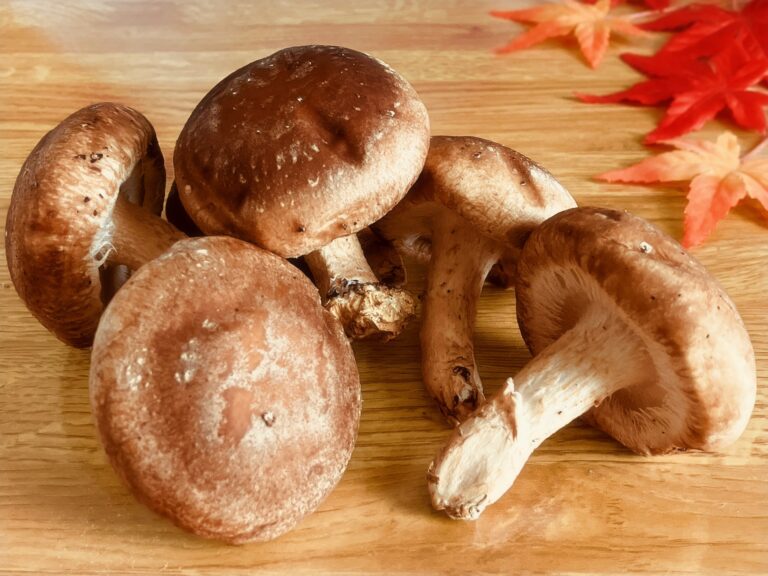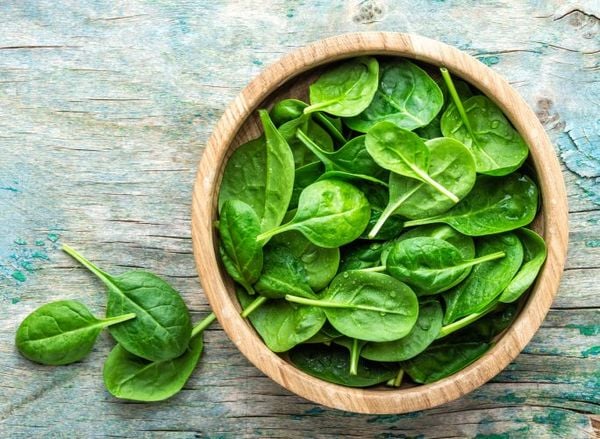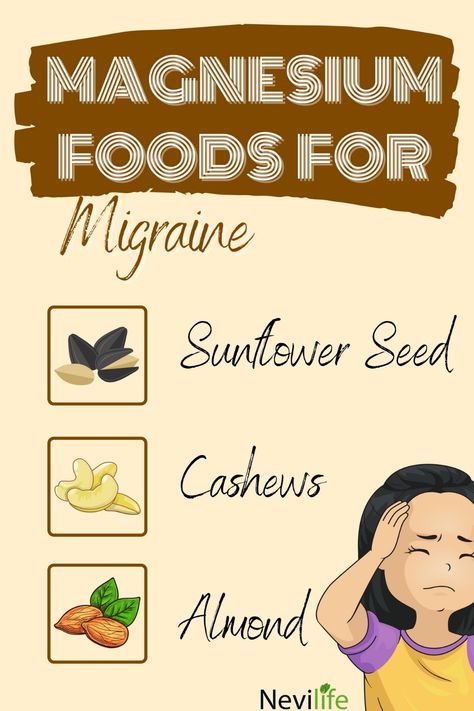The Inner Orchestra: How the Gut-Brain Diet Composes a Symphony of Mood and Mental Clarity
In a world that often feels fractured, hurried, and relentlessly demanding, it’s no wonder that our inner landscapes – our moods, our focus, our very sense of well-being – often bear the brunt. We grapple with anxieties that flicker like persistent embers, brain fog that obscures our sharpest thoughts, and a pervasive low hum of unease that no amount of external success seems to quiet. For generations, the prevailing wisdom has placed the seat of these mental battles squarely within the confines of the skull, a complex interplay of neurotransmitters, genetics, and life circumstances. But what if we’ve been missing a crucial piece of the puzzle, a silent, bustling metropolis within us that holds profound sway over our emotional and cognitive destiny?
This is the story of the gut-brain axis, a breathtakingly intricate communication superhighway that connects our digestive system to our central nervous system. It’s a story of discovery, of empowerment, and of the profound, transformative potential that lies within the simple, everyday act of eating. Welcome to the world of the Gut-Brain Diet, not a restrictive regimen, but a philosophy of nourishment that reveals how cultivating a thriving inner garden can compose a symphony of mood and unparalleled mental clarity.
Chapter 1: The Hidden Conversation – Unveiling the Gut-Brain Axis
Imagine a bustling city street. On one side, a grand parliament building (your brain), issuing decrees, processing information, and orchestrating the nation. On the other, a vibrant marketplace (your gut), teeming with life, trade, and constant activity, influencing every aspect of daily life. For a long time, we believed these two entities operated largely independently. The brain was the undisputed commander, and the gut merely a processing plant. But science, with its relentless curiosity, has begun to eavesdrop on a hidden conversation, a constant, bidirectional dialogue that reveals a far more democratic and interconnected system.
This conversation, the gut-brain axis, is not a single pathway but a complex web of communication channels, each playing a vital role:
-
The Vagus Nerve: The Superhighway: Think of the vagus nerve as the primary fiber optic cable connecting the brain to virtually every major organ in the body, including the gut. It’s a two-way street, transmitting signals from the brain to the gut (think butterflies in your stomach when nervous) and, crucially, from the gut back to the brain. This nerve is a direct conduit for information about gut health, inflammation, and the state of our microbial residents, profoundly influencing our stress response, mood, and cognitive function. A healthy vagal tone, often associated with relaxation and resilience, is intricately linked to a happy gut.
-
Neurotransmitters: The Chemical Messengers: You’re likely familiar with serotonin, dopamine, and GABA – the chemical messengers that regulate mood, pleasure, and calmness. What might surprise you is that a staggering 90% of serotonin, our "feel-good" hormone, is produced in the gut, not the brain. Similarly, gut microbes produce precursors to dopamine and GABA. These neurotransmitters, and their precursors, travel via the bloodstream and vagus nerve to influence brain function. A happy gut, therefore, is a prolific pharmacy, capable of synthesizing the very compounds that underpin our emotional stability.
-
The Immune System: The Silent Watchman: The gut houses about 70-80% of the body’s immune cells. This makes perfect sense; it’s the largest interface with the outside world, constantly encountering potential threats. When the gut is healthy, its immune system acts as a benevolent guardian. But when it’s compromised, allowing undesirable substances to "leak" into the bloodstream (a phenomenon known as increased intestinal permeability or "leaky gut"), it triggers a systemic inflammatory response. This inflammation isn’t confined to the gut; it can cross the blood-brain barrier, igniting neuroinflammation, which is increasingly implicated in depression, anxiety, brain fog, and neurodegenerative diseases.
-
Short-Chain Fatty Acids (SCFAs): The Microbial Byproducts: Our gut bacteria, in their diligent work of fermenting dietary fiber, produce a remarkable array of beneficial compounds, chief among them short-chain fatty acids like butyrate, propionate, and acetate. These SCFAs are not mere waste products; they are powerful signaling molecules. Butyrate, for instance, is the primary fuel source for the cells lining the colon, maintaining gut integrity. They also travel to the brain, where they can influence gene expression, reduce inflammation, and even impact neurogenesis (the creation of new brain cells). They are, in essence, microbial gifts that nourish both body and mind.
-
The Endocrine System: The Hormonal Harmonies: The gut also produces a range of hormones that influence appetite, satiety, and metabolism. These hormones, like GLP-1 and CCK, also communicate with the brain, affecting our energy levels, cravings, and overall metabolic balance, all of which indirectly impact mood and cognitive function.
This intricate network paints a picture of profound interdependence. Our gut is not just a digester of food; it’s a sophisticated sensory organ, a chemical factory, and a powerful communicator, constantly whispering secrets to our brain about the state of our internal world.
Chapter 2: The Unsung Heroes – Meet Your Microbiota
At the heart of this hidden conversation are trillions of microorganisms – bacteria, viruses, fungi, and archaea – collectively known as the gut microbiota. Far from being mere passengers, these microscopic residents form a complex, dynamic ecosystem, a bustling inner city within your intestines. Their collective genetic material, the microbiome, outnumbers our own human genes by a factor of 100. They are, in essence, a second genome, and their influence is breathtakingly vast.
Imagine your gut as a lush, biodiverse garden. A healthy garden teems with a wide variety of plants and creatures, each playing a specific role, contributing to the overall health and resilience of the ecosystem. In a healthy gut, this diversity (the sheer number of different species) and richness (the abundance of each species) are paramount. Different species specialize in different tasks: some break down complex carbohydrates, others produce vitamins, some regulate immune responses, and many are actively involved in the production of those crucial neurotransmitters and SCFAs we discussed.
These microbes are not just living in you; they are living with you, in a symbiotic relationship. You provide them with a warm, nutrient-rich home, and in return, they perform essential functions that you cannot do alone:
- Digestion and Nutrient Absorption: They help break down fibers and complex starches that our human enzymes cannot, unlocking vital nutrients.
- Vitamin Synthesis: They produce essential vitamins like K and several B vitamins.
- Immune System Training: They teach our immune system what is friend and what is foe, preventing overreactions and autoimmune responses.
- Protection Against Pathogens: A robust community of beneficial bacteria acts as a natural barrier, outcompeting and suppressing harmful invaders.
- Metabolic Regulation: They influence how we store fat, respond to insulin, and extract energy from our food.
When this inner garden flourishes, our entire being benefits. Our immune system is robust, our digestion smooth, and our mind is clear, calm, and resilient. The vast majority of these microbial residents reside in the large intestine, making what we feed them critically important.
Chapter 3: When the Conversation Breaks Down – The Roots of Dis-Ease
Just as a bustling city can fall into disarray, so too can our inner garden. In our modern world, the delicate balance of the gut microbiota is under constant assault, leading to a state known as dysbiosis – an imbalance in the types or quantities of microorganisms in the gut. When dysbiosis takes hold, the vibrant symphony turns into a cacophony, and the vital conversation between gut and brain becomes garbled, leading to widespread repercussions for our mental and physical health.
What are the saboteurs of this delicate balance?
- The Modern Western Diet: Perhaps the most significant culprit. High in processed foods, refined sugars, unhealthy fats, and artificial additives, and tragically low in fiber and diverse plant matter, this diet starves beneficial bacteria while feeding opportunistic, inflammatory species. Sugar, in particular, is a potent inflammatory agent and feeds yeast and certain harmful bacteria.
- Antibiotics: While life-saving in many instances, antibiotics are like a carpet bomb to the gut ecosystem, indiscriminately wiping out both harmful and beneficial bacteria. Recovery can take months, even years, and sometimes the diversity is never fully restored without intentional intervention.
- Chronic Stress: Our minds and guts are inextricably linked. Chronic psychological stress triggers the "fight or flight" response, diverting blood flow away from the digestive system, slowing gut motility, and altering the gut environment, favoring less beneficial microbes. The stress hormones themselves can directly impact the microbiota.
- Environmental Toxins: Pesticides, herbicides (like glyphosate), heavy metals, and pollutants can all disrupt the gut barrier and harm beneficial bacteria.
- Lack of Sleep: Poor sleep hygiene disrupts circadian rhythms, which in turn affect gut motility and microbial composition.
- Lack of Physical Activity: Regular movement promotes gut motility and microbial diversity.
- Excessive Alcohol Consumption: Alcohol can directly damage the gut lining and disrupt microbial balance.
When dysbiosis takes hold, several damaging processes ensue:
- Increased Intestinal Permeability ("Leaky Gut"): The tight junctions between the cells lining our intestines, which normally act as a selective barrier, become compromised. This allows undigested food particles, toxins, and microbial byproducts to "leak" into the bloodstream.
- Systemic Inflammation: The immune system, sensing these invaders, mounts an inflammatory response. This chronic, low-grade inflammation is not confined to the gut; it can become systemic, traveling throughout the body, including to the brain.
- Neuroinflammation: When inflammation reaches the brain, it can impair neuronal function, disrupt neurotransmitter balance, and damage brain cells. This neuroinflammation is increasingly linked to symptoms of depression, anxiety, brain fog, fatigue, and even more serious neurological conditions.
- Neurotransmitter Imbalance: With fewer beneficial bacteria producing serotonin, GABA, and dopamine precursors, and increased inflammation disrupting their function, the brain’s delicate chemical balance is thrown off, directly impacting mood, motivation, and cognitive clarity.
- Reduced SCFA Production: Without sufficient fiber for beneficial bacteria to ferment, the production of vital SCFAs plummets, starving the colon cells and reducing their protective and anti-inflammatory effects throughout the body and brain.
The consequence of this breakdown is not just digestive discomfort; it manifests as the very mental and emotional struggles so many of us face: persistent anxiety, inexplicable sadness, difficulty concentrating, memory issues, irritability, and a general sense of being "off." The story of our modern mental health crisis, it seems, has a profound chapter written in our gut.
Chapter 4: Building Your Gut-Brain Sanctuary – The Gut-Brain Diet in Practice
The good news is that unlike genetics or past experiences, our gut microbiota is remarkably resilient and responsive. We have an extraordinary power to reshape our inner garden, to mend the broken conversation, and to build a sanctuary for mental clarity and emotional resilience. This is the promise of the Gut-Brain Diet, not a fleeting trend, but a sustainable path to holistic well-being.
The core principle is simple: Feed your beneficial microbes, starve the harmful ones, and nourish your gut lining.
Foundational Pillars:
- Whole, Unprocessed Foods: This is the bedrock. Prioritize foods in their natural state, as close to their source as possible. Think fresh fruits, vegetables, whole grains, lean proteins, and healthy fats. These foods are rich in the fiber, vitamins, minerals, and phytonutrients that both you and your microbes thrive on.
- Diversity is Key: Just like a healthy ecosystem, a healthy gut needs a wide variety of microbial species. Each plant food contains unique fibers and compounds that nourish different strains of bacteria. Aim for at least 30 different plant foods per week. This might sound daunting, but it’s achievable by simply rotating your fruits, vegetables, grains, nuts, and seeds.
- Hydration: Water is essential for every bodily function, including digestion and nutrient absorption. It also helps move waste through the digestive tract, preventing constipation which can negatively impact the microbiome.
The Building Blocks of a Resilient Gut-Brain:
-
Prebiotics: The Food for Your Friends: These are non-digestible fibers that selectively feed beneficial gut bacteria, allowing them to flourish. Think of them as high-quality fertilizer for your inner garden.
- Sources: Garlic, onions, leeks, asparagus, Jerusalem artichokes, dandelion greens, unripe bananas, apples, oats, flaxseeds, chia seeds, legumes (beans, lentils).
- How they help: Promote growth of beneficial bacteria, increase SCFA production, strengthen the gut barrier.
-
Probiotics: The Friendly Replenishers: These are live beneficial bacteria and yeasts that, when consumed in adequate amounts, confer a health benefit. They help replenish and diversify your microbial community.
- Sources: Fermented foods are nature’s best probiotic source. Kefir (dairy or water), yogurt (unsweetened, with live active cultures), sauerkraut, kimchi, tempeh, miso, kombucha.
- How they help: Introduce new beneficial strains, compete with harmful bacteria, modulate immune response, produce beneficial compounds. (While supplements can be helpful, prioritize food sources for a broader range of strains and synergistic nutrients).
-
Omega-3 Fatty Acids: The Anti-Inflammatory Powerhouses: These essential fats are crucial for brain health and function, and they are potent anti-inflammatory agents throughout the body, including the gut.
- Sources: Fatty fish (salmon, mackerel, sardines, anchovies), flaxseeds, chia seeds, walnuts.
- How they help: Reduce systemic inflammation, support brain cell membrane integrity, improve mood, and potentially influence microbial composition in a beneficial way.
-
Antioxidants & Phytonutrients: The Protectors: These vibrant compounds found in colorful plant foods protect cells from damage caused by inflammation and oxidative stress.
- Sources: Berries (blueberries, raspberries, strawberries), dark leafy greens (spinach, kale, collards), brightly colored vegetables (bell peppers, carrots, sweet potatoes), dark chocolate, green tea.
- How they help: Combat neuroinflammation, support brain function, and protect gut lining integrity.
-
Lean Proteins: The Neurotransmitter Precursors: Amino acids from protein are the building blocks for neurotransmitters.
- Sources: Fish, poultry, eggs, legumes, nuts, seeds, lean red meat in moderation.
- How they help: Provide the raw materials for serotonin, dopamine, and other mood-regulating chemicals.
-
Healthy Fats: Beyond Omega-3s: Avocados, olive oil, nuts, and seeds provide monounsaturated and polyunsaturated fats that support brain health, hormone production, and satiety.
Foods to Limit or Avoid (The Saboteurs):
- Refined Sugars and Artificial Sweeteners: These feed harmful bacteria, promote inflammation, disrupt blood sugar, and offer no nutritional value. Artificial sweeteners have been shown to negatively alter gut microbiota.
- Highly Processed Foods: These are typically devoid of fiber, loaded with unhealthy fats, sugar, and additives that damage the gut lining and promote dysbiosis.
- Unhealthy Fats: Trans fats and excessive amounts of omega-6 fatty acids (found in many processed oils) can promote inflammation.
- Excessive Alcohol: Damages the gut lining, promotes dysbiosis, and impairs nutrient absorption.
- Gluten (for sensitive individuals): While not universally bad, for those with celiac disease or non-celiac gluten sensitivity, gluten can trigger inflammation and gut damage. Listen to your body.
Implementing the Gut-Brain Diet isn’t about perfection; it’s about progress. Start small. Introduce one new fermented food a week. Add an extra serving of vegetables to each meal. Swap out a processed snack for a handful of berries and nuts. Each conscious choice is a vote for your well-being, a loving act for your inner garden.
Chapter 5: Beyond the Plate – Cultivating a Holistic Gut-Brain Connection
While diet forms the cornerstone of the Gut-Brain approach, it’s crucial to remember that we are complex beings. Our internal symphony is not played by a single instrument. Lifestyle factors exert a powerful influence, either amplifying the benefits of a gut-healthy diet or undermining our best efforts.
-
Stress Management: Quieting the Inner Storm: Chronic stress is a relentless antagonist to gut health. It alters gut motility, increases permeability, and shifts microbial composition. Incorporating stress-reducing practices is non-negotiable for gut-brain harmony.
- Mindfulness & Meditation: Even 10-15 minutes a day can calm the nervous system, enhance vagal tone, and reduce inflammatory markers.
- Deep Breathing Exercises: Simple yet powerful, deep diaphragmatic breathing directly stimulates the vagus nerve, promoting relaxation.
- Yoga & Tai Chi: Combine gentle movement with breathwork, fostering mind-body connection.
- Time in Nature: Spending time outdoors has been shown to reduce stress hormones and improve mood.
-
Quality Sleep: The Nightly Reset: Sleep is when our body and brain repair and restore. Poor sleep disrupts circadian rhythms, which in turn negatively impact gut microbiota and hormonal balance.
- Aim for 7-9 hours of quality sleep: Establish a consistent sleep schedule, create a dark, cool, quiet sleep environment, and avoid screens before bed.
-
Movement & Exercise: Getting the Energy Flowing: Regular physical activity isn’t just for muscles; it benefits the gut and brain too.
- Boosts Microbial Diversity: Studies show exercise can increase the richness and diversity of the gut microbiota.
- Reduces Inflammation: Exercise is a natural anti-inflammatory.
- Improves Mood: Releases endorphins and helps manage stress. Find an activity you enjoy, whether it’s walking, dancing, cycling, or strength training.
-
Social Connection: Nourishing the Soul: Humans are social creatures. Meaningful connections reduce feelings of isolation and stress, both of which can impact gut health and mental well-being.
- Spend time with loved ones: Engage in conversations, share meals, and participate in community activities.
-
Sunlight Exposure: Vitamin D and Mood: Adequate sunlight exposure helps synthesize Vitamin D, which plays a role in immune function, mood regulation, and potentially gut health.
By weaving these lifestyle elements into your daily fabric, you create a truly holistic environment where your gut-brain axis can thrive, fostering not just physical health but profound mental and emotional flourishing.
Chapter 6: The Journey Ahead – Patience, Personalization, and the Power of Listening
Embarking on the Gut-Brain Diet is not a sprint; it’s a profound journey of self-discovery and transformation. The gut microbiome is as unique as a fingerprint, and what works wonders for one person might be less effective for another. Patience, persistence, and a willingness to listen intently to your own body are your most valuable guides.
- Start Gradually: Overhauling your diet overnight can be overwhelming and unsustainable. Introduce changes slowly, allowing your body and your microbes to adapt. Add one new prebiotic food this week, try a different fermented food next week.
- Observe and Journal: Pay close attention to how different foods make you feel. Do certain foods trigger digestive upset or a dip in mood? Do others leave you feeling energized and clear-headed? A food journal can be an invaluable tool for identifying your personal triggers and allies.
- Don’t Expect Perfection: Life happens. There will be times when you deviate from your ideal diet. Don’t let guilt derail your progress. Simply acknowledge it and gently steer yourself back on course. The power lies in consistency over time, not in flawless execution every single day.
- Seek Professional Guidance: If you have underlying digestive issues, chronic mental health concerns, or complex health conditions, consult with a qualified healthcare professional (e.g., a registered dietitian, a functional medicine practitioner, or a gastroenterologist) who understands the gut-brain connection. They can provide personalized advice, conduct tests (like stool analyses), and help you navigate your journey safely and effectively.
- Embrace the Process: This isn’t just about "fixing" problems; it’s about cultivating a deeper relationship with your body, understanding its signals, and empowering yourself with knowledge.
The narrative of the gut-brain connection is still being written, with new discoveries emerging constantly. But the fundamental truth is clear: the path to a clearer mind and a more resilient mood often begins with the humble act of nourishing our inner ecosystem.
Conclusion: Composing Your Masterpiece
The story of the Gut-Brain Diet is a testament to the incredible interconnectedness of our being. It shatters the old paradigm of a disconnected mind and body, revealing a dynamic, responsive symphony where every note played in our gut resonates deeply within our brain.
The anxieties, the brain fog, the moments of despondency that once seemed insurmountable, may now be understood not as solely brain-centric defects, but often as whispers from a distressed inner garden. By consciously choosing to feed our beneficial microbes, to soothe our gut lining, and to integrate mindful lifestyle practices, we are not just altering our physical health; we are actively composing a new narrative for our mental and emotional lives.
This journey is an invitation – an invitation to reclaim your mental clarity, to rediscover your innate emotional resilience, and to experience the profound joy of living in harmony with your own inner orchestra. It’s a story that empowers you, the protagonist, to wield the most fundamental tool at your disposal – your fork – and to consciously, deliciously, and profoundly eat your way to a more vibrant, balanced, and brilliant self. The power to transform your mood and sharpen your mind isn’t a distant dream; it’s waiting, within your gut, ready to be nurtured into a magnificent, life-affirming symphony.







